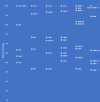DavidGraham
Veteran
Sony is installing a cluster of NVIDIA DGX A100 systems linked on an NVIDIA Mellanox InfiniBand network.
Sony’s engineers are packing machine-learning smarts into products from its Xperia smartphones, its entertainment robot, aibo, and a portfolio of imaging components for everything from professional and consumer cameras to factory automation and satellites. It’s even using AI to build the next generation of advanced imaging chips.
https://blogs.nvidia.com/blog/2021/...582&linkId=100000040843726#cid=_so-twit_en-us



/cloudfront-us-east-2.images.arcpublishing.com/reuters/OIUFNXMB5NPPVHSOMQP6HJDGNE.jpg)
